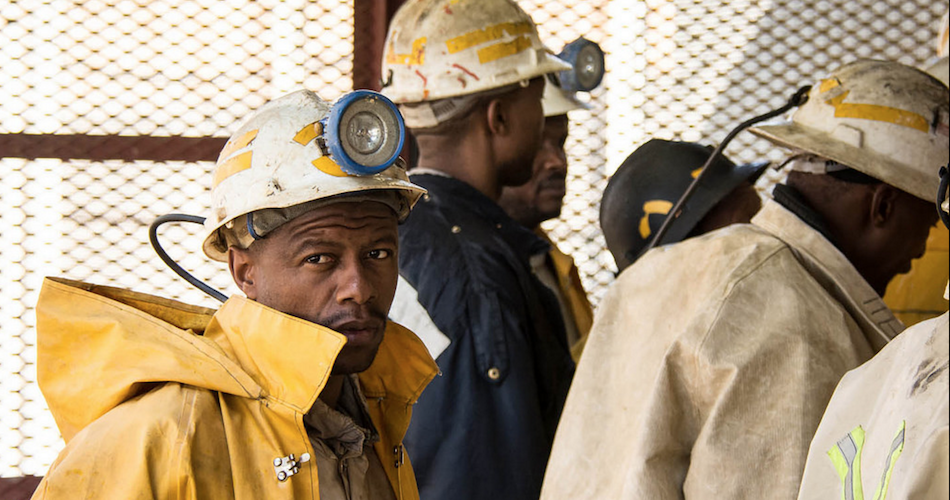
The pledge by some developed countries to provide $8.5 billion to help South Africa move away from coal is nowhere near the trillions needed to avoid the worst effects of climate change. It’s not even the full amount the nation’s struggling state utility Eskom needs to close its polluting plants, estimated at about $10 billion.
To climate diplomacy experts, however, it represents something of a breakthrough. The deal is already being held up as a model for helping other developing nations end their reliance on the dirtiest fossil fuel. John Morton, a private equity investor and climate counselor to the U.S. Treasury, told the Washington Post that South Africa’s coal-intensive energy system made it, ironically, a kind of prize for donor countries.
But a rush to announce more such deals with coal-rich countries could eclipse something just as important: getting money to the countries that are smallest, poorest and most exposed to the effects of climate change. This might lack the excitement of “witnessing the end of coal in real time,” as one expert described the South Africa pledge, but it is no less crucial.
That’s not to say exuberance over the South African coal transition money is baseless — even if details have yet to be finalized. The arrangement could help to remake its coal-dependent economy. While the government hasn’t unanimously endorsed it, it does have the support of President Cyril Ramaphosa, along with key unions and civil society groups and Eskom itself.
Other coal-rich developing countries have already indicated interest in similar deals. Indonesia, the incoming Group of 20 host, is another middle-income country heavily dependent on coal. The government has said it could raise its emissions reduction targets if it receives more foreign climate finance to close its large fleet of coal-fired power plants. India’s Prime Minister Narendra Modi has said wealthy countries would need to provide $1 trillion per year for developing countries to meet ambitious climate targets. A new “Accelerating Coal Transition” program by the multilateral Climate Investment Funds has designated $2.5 billion to help India, Indonesia, South Africa and the Philippines abandon coal.
Germany, this year’s Group of Seven president, is a contributor to the $8.5 billion South Africa pledge, and a senior official, Jochen Flasbarth, has said that Pakistan, India, Indonesia, Rwanda, and Serbia are possible contenders for a similar package. Germany plans to close its coal-fired power sector and thermal coal is increasingly tainted at home — not just among environmentalists, but also investors and citizens. Supporting coal shutdowns abroad could win political support in a way that providing other international aid hasn’t in the past.
But what about the dozens of poor and small countries that are highly vulnerable to the effects of climate change, yet don’t have the bargaining power of a planet-endangering coal fleet?
Many Sub-Saharan African countries lack robust energy systems and face barriers to finance them. There’s an even steeper hurdle to fund protection from the ravages of hotter, more volatile weather. Several are already spending as much as 9% of their gross domestic product on adaptation measures. But there’s less political appeal for German or U.S. officials to declare they’re helping climate-proof foreign countries; the diffuse nature of adaptation makes that unrealistic anyway.
An even harder battle is getting wealthy countries to provide money for what’s known as “loss and damage” — funds to help countries recover from climate-fueled events that can’t be prevented. Many of these nations, often small island states, can only dream of the financing flexibility available to South Africa, Indonesia or India, who can raise international capital by issuing government bonds in their own currencies.
Meanwhile, South Africa’s middle income status hasn’t necessarily benefited those in the coal-mining province of Mpumalanga, and the country has one of the biggest inequality gaps in the world.
Between coal workers in South Africa and residents in low-lying islands, who should get help? The answer, of course, is both. Rich countries need to provide much more support for poorer nations to not only cut emissions but also adapt to climate change. In practice this means more grant-based finance and a more equitable financial architecture that doesn’t penalize developing countries with funding that’s more limited, onerous or expensive than what their wealthier peers can access.
The experience of the pandemic—with countries jostling for access to vaccines—suggests solidarity between richer and poorer nations may be tough. But finance for emerging markets is such a fundamental point of tension at annual United Nations climate meetings that it often holds up everything else, including attempts to reach net-zero emissions before the Earth is too hot to live. Smart western governments should be able to see that giving enough money to developing countries — including those without coal to eliminate — will benefit everyone.
(By Kate Mackenzie)
Comments